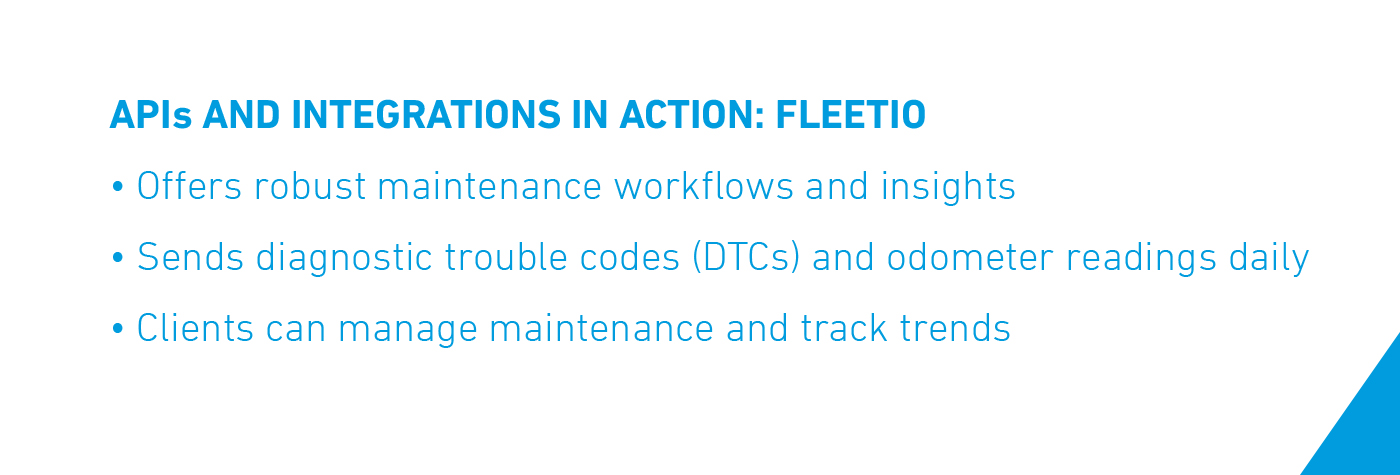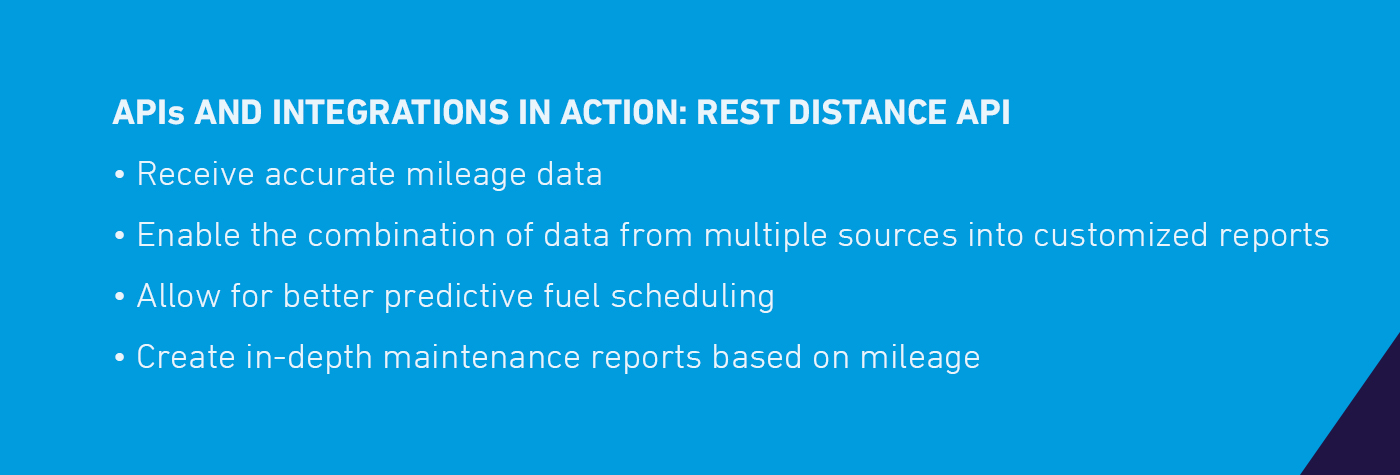Unlocking the Power of APIs and Integrations in Fleet Management: A Crawl, Walk, Run Approach

It’s tough to be the very best in everything. That especially rings true when it comes to fleet technology. There are so many use cases to solve for depending on any one company’s specific needs and challenges. That’s where integrations come in! At Lytx®, we bring our world class fleet safety data and connect that with best-in-class third-party solutions for fleet tracking, fleet telematics, preventative maintenance, and so much more.
We work with you to architect the right solutions for their fleets. APIs and integrations are one way we support you with whatever they need as part of our commitment to provide them with the very best.
We know that there is no one-size-fits-all answer to meeting every fleet requirement. This is where our integrations approach of crawl first, walk second, then finally run, comes into play, which allows us to help companies implement new solutions at their own pace. It can be a daunting task to bring data together. This approach solves for best ensuring the data has not lost integrity or been compromised, that the correct data is being shared, and that the right actionable steps are taken once all the data has been integrated.
The Value of APIs and Integrations in Fleet Management
What are APIs and Integrations?
APIs
- Can be used for highly customized purposes
- Integrate data across solutions for specific use cases that Lytx may not offer
Considerations
- Get greater ability to customize, but it’s a larger investment
- More intrinsic costs are associated with APIs, as clients are typically investing their own resources
Integrations
- Pre-built connectors that reduce complexity of connecting data
- Pathways between our platform and the partner platform solve for the most common use case
Considerations
- Inability to develop customization from the raw API data
- Pre-built pathways may not fit some exact fleet management needs if use case is uncommon
Which one you choose depends on your company and the needs and resources you have. Often, a pre-built integration can fit the bill, but in some cases, the business case for an API warrants the resources to build it.
Either way, APIs and integrations reduce manual processes and data silos, allow for better decision making thanks to consolidated and comingled data, and save time and resources in the long run.
The Crawl, Walk, Run Approach to Integrations
Overview of the Framework:
Our phased approach to connecting your data helps us to minimize your risk, aligns with your phase of readiness, and ultimately ensures sustainable scaling and growth for your company.
Crawl – Getting Started with Simple Integrations
What It Looks Like:
- Use pre-built integrations to minimize effort
Benefits:
- Immediate operational efficiencies without overwhelming the team
Example Use Case:
Let’s take Fleetio as an example. Fleetio is powered by a Lytx integration. They offer robust preventative maintenance workflows and insights and send diagnostic trouble codes and odometer readings daily. They serve a diverse range of fleets from small to enterprise level. Because it uses pre-built connectors, there is no extra effort needed from you when it comes to onboarding.
In this example, Lytx is the aggregator of the data, but we leverage a third party to meet your needs. Fleetio offers a lot of customization, so it can be a more robust option for fleet tracking compared to some lighter solutions.
If we look at fleet management and telematics, the field services group is hugely diverse. When we have that kind of diversity, the use cases for data are equally large. This integration approach allows Lytx to be the expert on collecting data and ensuring it’s the right caliber. Leveraging integration partners best ensures you get the best level of expertise from your solution set.

Walk – Building Momentum with Intermediate APIs
What It Looks Like:
- Introduce APIs that comingle data from multiple sources
Benefits:
- Improved compliance and deeper insights into fleet health
Example Use Case:
Let’s look at the REST Distance API. This API helps fleets visualize enriched data, which can inform custom reports that reveal insights about a fleet’s overall efficiency and lead to powerful decision making. This API enables receipt of accurate mileage data and facilitates the comingling of data from multiple sources. This allows for better predictive fuel scheduling and can help operations managers parse daily vehicle mileage. All of this can then be used to create in-depth reports based on mileage, including utilization reports and normalization of safety metrics by miles.

Run – Advanced Custom Integrations for Maximum Efficiency
What It Looks Like:
- Leverage APIs for custom solutions, advanced analytics, or predictive maintenance
Benefits:
- Full operational optimization and competitive edge
Example Use Case:
Let’s look at how Lytx customer Beacon Mobility is currently working towards a full stride “run” status with their connected data.
Beacon Mobility started out with numerous applications with little interconnectivity. Their teams often relied on manual data entry using rudimentary Excel sheets that were prone to human error. It was hard to gain full visibility and trust of all incoming data.
After working with Lytx solutions architects, they now have point-to-point application integrations, reducing the need for manual data entry. Data is flowing automatically, and even triggers certain actions. An example of this is their integration with Workday. It feeds employee information on a real-time basis whenever a new employee gets hired, or when an employee changes locations. This puts the right information into Lytx to best ensure Beacon Mobility’s safety coaches can coach and educate the right drivers at the right time.
Beacon Mobility also uses integrations to bring vehicle data together, leading to better maintenance and vehicle safety. In the past they had to use multiple sources to extract how many miles each vehicle was driven, and then manually combine the data into Excel spreadsheets. With the Lytx Distance API, Beacon Mobility now gets mileage information straight from the GPS daily through Lytx, creating accurate and timely information, and better proactive maintenance as a result.
Check out Beacon Mobility's full story here.
Unlock New Opportunities: Why Now Is the Time to Integrate
You can get the most out of your solutions by leveraging Lytx’s network of APIs and integrations. Our solution architects can explore the right fits for your needs. Whether that’s integrating DVIR and fleet tracking, or just getting started with bringing your data together, we’re here to help.
Exploring integrations is also a great bet on the future of your operations. Integrating data helps future-proof your fleet. Creating a foundation for connected data now prepares your business for future growth and gives your company a competitive edge for unlimited success.
Are you ready to talk with your sales representative about integrating your data? We’re ready to bring your vision to life.
